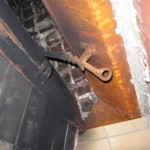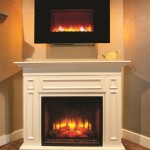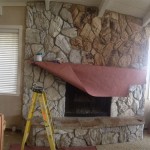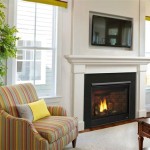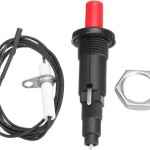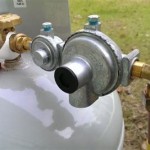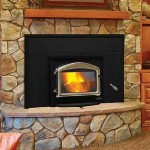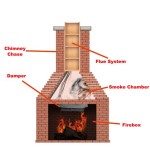Installing a Flat Screen TV Above a Gas Fireplace: Considerations and Best Practices
Installing a flat-screen television above a gas fireplace is a popular design choice, merging entertainment and ambiance. However, this installation requires careful planning and execution to ensure the safety of the television, the structural integrity of the wall, and the long-term functionality of both appliances. This article provides a comprehensive overview of the factors to consider before, during, and after installing a flat-screen TV above a gas fireplace.
Assessing Heat Exposure and Ventilation
The most significant concern when mounting a television above a gas fireplace is heat exposure. Electronic components are sensitive to high temperatures, and prolonged exposure can significantly shorten the lifespan of the television, leading to performance issues or complete failure. Gas fireplaces generate a considerable amount of heat, and the concentration of this heat directly above the fireplace can be substantial.
Before proceeding with the installation, it is crucial to evaluate the heat output of the fireplace and the effectiveness of its heat deflection system. Consult the fireplace's owner's manual for heat output specifications, typically expressed in British Thermal Units (BTUs). A higher BTU rating indicates greater heat production. Analyze the design of the fireplace and any existing heat shields or mantels. These elements are designed to deflect heat away from the surrounding wall and objects above the fireplace.
The distance between the top of the fireplace and the bottom of the television is a critical factor. A larger distance generally reduces the heat exposure. A general rule of thumb is to maintain a minimum of 12 inches between the top of the fireplace and the bottom of the television. However, this distance may need to be greater depending on the heat output of the fireplace and the presence of a mantel or heat shield. Consider using a temperature sensor placed in the intended television location to monitor the temperature during regular fireplace operation. If the temperature consistently exceeds 100 degrees Fahrenheit, relocating the television or implementing additional heat shielding is essential.
Adequate ventilation is also crucial. Ensure that the area behind the television has sufficient airflow to dissipate any trapped heat. Avoid completely enclosing the television within a recessed space without proper ventilation. Consider installing small ventilation fans behind the television to actively circulate air and prevent heat buildup.
Structural Considerations and Mounting Techniques
The structural integrity of the wall above the fireplace is paramount for safely mounting a flat-screen television. The wall must be capable of supporting the weight of the television and the mounting bracket. Locate the wall studs behind the drywall or other wall covering. These studs provide the strongest anchoring points for the mounting bracket.
Use a stud finder to accurately identify the location of the studs. Confirm the stud locations by driving small nails or screws into the wall at the suspected stud locations. If the wall studs are not spaced appropriately for the desired television position, consider installing a horizontal ledger board spanning multiple studs. The mounting bracket can then be attached to the ledger board, distributing the weight across multiple studs.
Select a mounting bracket that is specifically designed for the size and weight of the television. Choose a bracket that allows for tilting or swiveling the television to optimize viewing angles. Ensure that the mounting bracket is securely attached to the wall studs using appropriate lag bolts or screws. Use a level to ensure that the mounting bracket is perfectly horizontal before tightening the fasteners.
Consider running the electrical and audio-visual cables through the wall to conceal them and create a cleaner aesthetic. Use in-wall rated cables that are designed to be safely installed within walls. Install electrical outlets and cable boxes behind the television to minimize visible wires. Follow all local electrical codes and regulations when installing electrical components.
If the wall is made of brick or stone, special anchoring techniques are required. Use masonry anchors that are specifically designed for the type of brick or stone. Ensure that the anchors are properly sized and installed according to the manufacturer's instructions. Drilling into brick or stone requires specialized drill bits and techniques to avoid cracking or damaging the masonry.
Addressing Cable Management and Power Supply
Effective cable management is essential for a clean and professional installation. A tangle of wires hanging beneath the television is unsightly and can pose a safety hazard. As previously mentioned, running cables through the wall is the preferred method for concealing wires. Use in-wall rated HDMI cables, coaxial cables, and power cables that are designed for safe installation within walls.
If running cables through the wall is not feasible, consider using cable management sleeves or conduits to bundle and conceal the wires. These sleeves or conduits can be attached to the wall and painted to match the wall color, making them less noticeable. Use cable ties or Velcro straps to organize the wires and prevent them from dangling. Leave sufficient slack in the cables to allow for tilting or swiveling the television without straining the connections.
The power supply for the television needs to be carefully considered. Avoid using extension cords, as they can be a fire hazard. Install a dedicated electrical outlet behind the television to provide a safe and reliable power source. Ensure that the outlet is properly grounded and protected by a circuit breaker. If necessary, hire a qualified electrician to install a new outlet.
Consider using a surge protector to protect the television from power surges. Power surges can damage sensitive electronic components and shorten the lifespan of the television. A surge protector will absorb excess voltage and prevent it from reaching the television. Ensure that the surge protector is plugged into a properly grounded outlet.
For a completely concealed installation, consider using a recessed power outlet. A recessed outlet is installed flush with the wall and provides a hidden power source for the television. This eliminates the need for a visible power cord and creates a cleaner aesthetic. Recessed outlets typically require professional installation.
Furthermore, consider the placement of other components such as cable boxes, streaming devices, and gaming consoles. Ideally, these components should be located in a nearby cabinet or entertainment center. Use a universal remote control to operate all of the devices from a single remote, simplifying the user experience. If the components are located behind the television, ensure that they have adequate ventilation to prevent overheating.
Wireless connectivity can also minimize the need for cables. Consider using a wireless HDMI transmitter and receiver to transmit video and audio signals from the cable box or other devices to the television. This eliminates the need for running HDMI cables through the wall. However, wireless HDMI systems can be susceptible to interference and may not provide the same level of performance as wired connections.
After the installation is complete, thoroughly test all of the connections and functions of the television. Ensure that the picture and sound quality are satisfactory. Check the viewing angles to ensure that the television is properly positioned. Verify that the remote control is working correctly. Monitor the temperature behind the television during normal use to ensure that it is not overheating. If any issues are detected, troubleshoot the problem and make any necessary adjustments. Regular inspection of the installation is recommended to ensure the continued safety and functionality of the television and the fireplace.
In summary, installing a flat-screen television above a gas fireplace requires careful planning and execution to ensure safety, structural integrity, and long-term functionality. Assessing heat exposure, addressing structural considerations, and managing cables and power supply are crucial aspects of the installation process. By following these guidelines and consulting with qualified professionals, it is possible to create a visually appealing and functional entertainment setup that integrates seamlessly with the ambiance of a gas fireplace.

Can I Mount My Tv Above The Fireplace

Can I Mount My Tv Above The Fireplace

Ortal S Innovative Technology Makes It Safe To Mount A Tv Above Your Fireplace
Can I Mount A Tv Over My Fireplace Heatilator

Installing A Tv Above The Fireplace

ᑕ❶ᑐ What To Consider Before Mounting A Tv Above Fireplace

ᑕ❶ᑐ What To Consider Before Mounting A Tv Above Fireplace

Safely Mount A Tv Above An Electric Fireplace Touchstone Home S Inc

3 Myths About Mounting Tvs Over Fireplaces Monmouth County

Matching Your Tv Size To Fireplace

